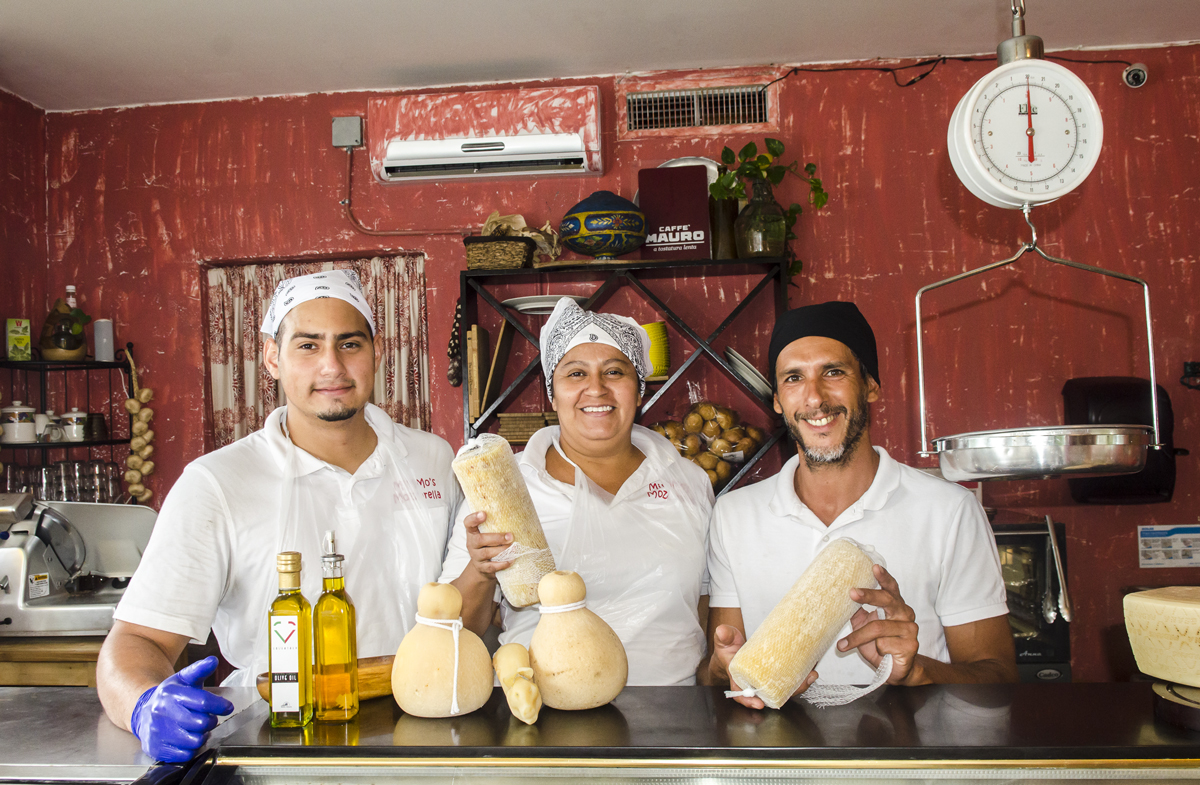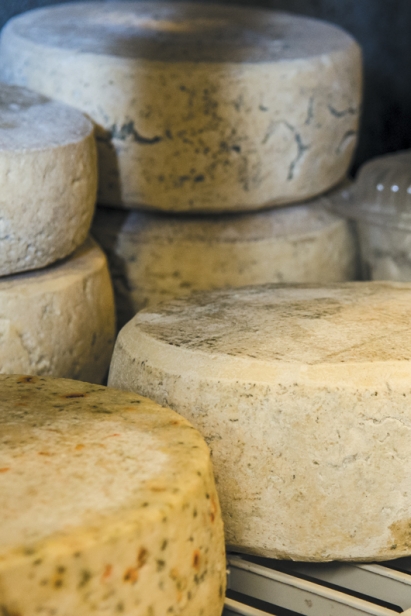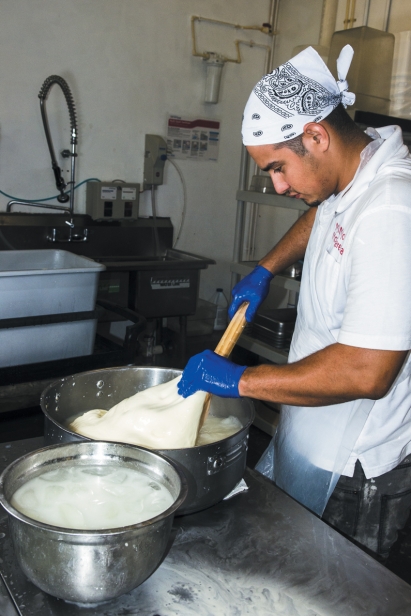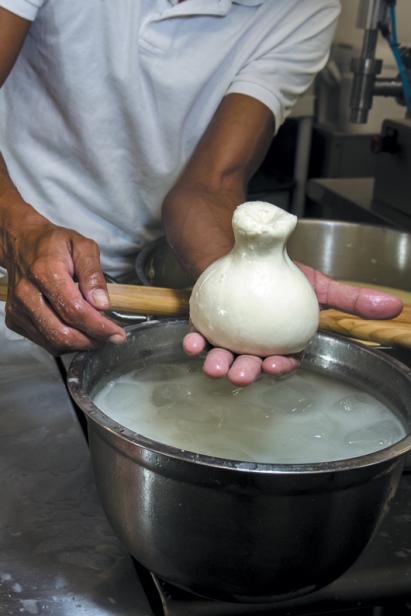Say Cheese, Please
It’s hard to imagine that someone as young as Bruno Ponce has been making food for 25 years, but the lithe 40-year-old has worked hard on two continents, as a baker, restaurateur and cheesemaker. Born in Buenos Aires, where his father had a restaurant, Ponce moved to Uruguay when he was 15 and got a job making bread in a bakery. In 1998, Ponce decided to move to Miami after meeting the owner of Cafe Prima Pasta. He worked at the longtime Miami Beach restaurant, then went to Soprano Pizza on Washington Avenue in South Beach, where $2.50 slices were popular with late-late-night patrons and employees of the hot clubs of the day: Club Deep, Bash, Macondo. A year later, the owner asked him if he wanted to be the manager. No, answered Ponce: “I want to buy your business!”
From 2002 through 2008, the new restaurateur pushed pizzas at Soprano. But prices were rising – a $20 bag of flour in 2004 rose to $38, and rent was skyrocketing. In 2008, Ponce sold the pizzeria to a buyer from Chicago and joined the kitchen at Sardinia in Miami Beach, in what’s now Sunset Harbour, and, in 2009, the nearby companion restaurant, Casale Pizzeria. The pizzeria included a mozzarella bar, so the owner brought in an Italian cheesemaker to create the milky cheese and the burrata – the soft globe of fresh mozzarella that, when cut open, oozes rich salty cream and stracciatella. “We hired Mimmo from Bari to make fresh mozzarella and burrata,” says Ponce, who closely studied the artisan’s work.
Scooter Delivery
But Casale didn’t last, Mimmo moved to New York, and Ponce went back to working at Sardinia. But he was intrigued by the cheesemaking. Using what he had learned from Mimmo, he experimented making mozzarella in his small South Beach apartment every night after he got home from work as sous chef. He shared his burrata with other chefs in the neighborhood, and soon was delivering his handmade cheese to restaurants on his scooter.
Named for his mentor, Mimmo’s became a business that was growing, and it became difficult for Ponce to do everything – finding customers, distributing, making the product in his kitchen, taking deliveries of cheese curd from the Sysco truck in his neighborhood. He found a production facility in Little River and bought a delivery van. He marketed his cheese on Facebook and started selling to Juvia, Hosteria Romano, Caffe Abbracci, Baires Grill and other South Florida restaurants. Marky’s, the gourmet purveyor on 79th Street, approached him to distribute his burrata nationally.
Friends convinced Ponce to open a shop so they could buy his cheese retail. Three years ago, he and his wife, Aliette Weill, opened Mimmo’s Mozzarella Italian Market and Cafe, tucked away in a triangle in North Miami between NE 123 Street and West Dixie Highway. Today it is a gathering place for friends and cheese aficionados.
“People love it,” he says. “Chefs come in with their families.” Part cafe/market, part showroom for his cheeses, the homey space includes the cheese production kitchen in the back. Tiny tables indoor and outside make this an inviting space for panini, salads and soups – an expanding repertoire of cheeses.
More Varieties
Burrata remains the best seller, Ponce says, but other creations are gaining ground: the truffle and porcini basket cheese, an aged mozzarella; provolone; scamorza, shaped and aged for a year; another variation is made with a lemon inside. His braided and rolled cheeses dress up party platters. Some are savory – filled with olives and prosciutto or soppressata – while others are filled with dried fruits. Ponce now makes his own version of gorgonzola, the classic northern Italian cheese, adding the blue mold and aging the cheese for eight months in a cooler with higher humidity to simulate cave-like conditions. Other cheeses, like Mina and Colonia, are seasoned and formed in plastic baskets.
Mimmo’s newest location is a stall at the weekend Yellow Green Farmers Market where they can reach their Broward customers. “We’re also exploring working with a company to open a Mimmo’s Mozzarella in Chicago,” he says. And he’s actively working on a location in South Miami. “Yes, we work seven days a week,” he says. “I am happy with the business. I like to make cheese.”
Curd Culture
Making mozzarella (and all of Mimmo’s cheeses) starts with curd – big blocks of mozzarella, ready to be cut into pieces, then kneaded and shaped, flavored and molded, served fresh or aged. Ponce gets his curd from a family-owned Rhode Island creamery that makes the curd from cow’s milk sourced from dairy farms in eastern Connecticut, Rhode Island, and Massachusetts. Every week, Mimmo’s goes through 500-600 pounds of curd, working with one 25-pound bag at a time in their commercial kitchen at the rear of their cafe. For all their cheeses, they use hot water, at the ready on a bank of induction burners; cold water, in a tub cooled by ice cubes as needed; tubs of brine to soak some of the cheeses; and ice water buckets for workers to plunge their hands in periodically. Nearly everything here is done by hand on stainless steel surfaces, but there is one piece of equipment, a mechanical funnel, used to inject salted heavy cream and stracciatella – cheese shreds – into pouches of mozzarella to make creamy burrata.
Chopped-up mozzarella curd goes into a big bowl and very hot water is added. After about 10 minutes, the cheese becomes pliable. David first uses a wooden paddle to stir the curds until they form a homogenized mass. Along the way, he drains off cooler water and adds more hot water. He uses his hands to knead, pull and stretch the curd until it is shiny and smooth and ready for shaping.
He rolls it out on the wet surface like dough and covers it with soppressata and two kinds of olives, then rolls it up like a jelly roll, seals up the edges and braids it to make treccione. For truffle-porcini cheese, imported Italian truffle-porcini paste is worked into the cheese, which is shaped and aged in a basket.
Cheeses take a bath in brine for 4-5 hours, where they absorb salt and develop a skin. Afterward, they are moved to racks in the walk-in coolers where they are aged. This cheese is filled with dried figs, apricots and cranberries, rolled and set inside a Bundt pan, for a sweet-and-salty version. Fresh burrata is made and delivered daily to local restaurants to be served the same day.
Mimmo’s Mozzarella Italian Market and Cafe
475 NE 123 St., North Miami
Mimmo’s Mozzarella is open Mon.-Sat. 9am-8pm. You can also find them on weekends 8am-4pm at Yellow Green Farmers Market in Hollywood. Buy their cheeses at Proper Sausages in Miami Shores, Gaucho Ranch in Little River, Marky’s on 79th St., and at South Florida restaurants, including Novecento, Juvia and the Biltmore Hotel.











